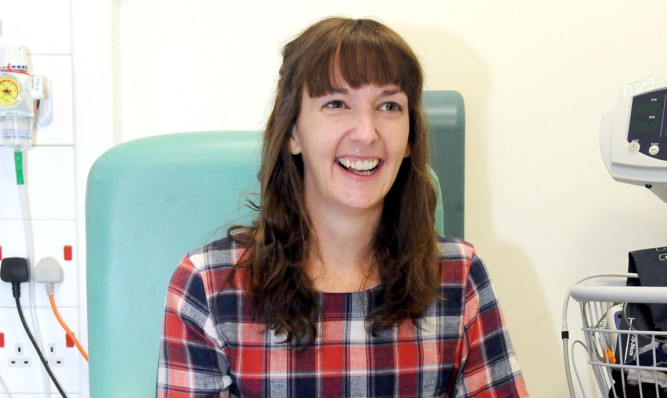Scots nurse Pauline Cafferkey is in a “stable” condition after being admitted to hospital for a third time since contracting Ebola.
Ms Cafferkey, who comes from Fife, was originally infected while working in Sierra Leone in December 2014 and spent almost a month in an isolation unit at the Royal Free Hospital in London.
She was released after making a recovery but fell ill again in October last year and was again treated at the Royal Free for meningitis caused by Ebola.
At one point, the Scottish nurse was described as “critically ill” but was discharged in November and transferred to Glasgow’s Queen Elizabeth University Hospital to continue her recovery and later returned home.
She is now being treated again at the Glasgow hospital after “routine monitoring” identified a problem.
An NHS Greater Glasgow and Clyde spokesman said: “Ms Cafferkey was admitted to the Queen Elizabeth University Hospital under routine monitoring by the infectious diseases unit.
“She is undergoing further investigations and her condition remains stable.”
In November, the Royal Free said Ms Cafferkey had made a full recovery from Ebola and was no longer infectious.
She contracted the deadly virus while working as a nurse at the Save the Children treatment centre in Kerry Town, Sierra Leone, but was diagnosed after returning to Glasgow from the west African country via London.
At the time of her re-admission last year, Dr Michael Jacobs, from the Royal Free, described the situation as “unprecedented” while the World Health Organisation (WHO) said Ms Cafferkey was the only known Ebola survivor to develop meningitis months later.
Dr Jacobs, infectious diseases consultant at the hospital, told a press conference in October: “This is the original Ebola virus she had many months ago which has been inside the brain, replicating at a very low level, and has now re-emerged to cause this clinical illness of meningitis.
“This is an unprecedented situation.”
The WHO declared the Ebola outbreak over last year after the deaths of thousands of people but two new cases emerged in Sierra Leone in January.
The organisation called for a “critical period of heightened vigilance”.
When Ms Cafferkey was released from hospital for the second time, she said: “I am forever thankful for the amazing care I have received at the Royal Free Hospital.
“For a second time, staff across many departments of the hospital have worked incredibly hard to help me recover and I will always be grateful to them and the NHS.”
Dr Derek Gatherer, lecturer in biomedical and life sciences at Lancaster University, said he was “very sad to hear” that Ms Cafferkey has been admitted to hospital.
“It is now becoming clear that Ebola is a far more complex disease than we previously imagined,” he said.
“The meningitis that Ms Cafferkey suffered from at the end of last year is one of the most serious complications of all, as it can be life-threatening. She was unlucky enough to be one of only a handful of patients in whom it has been seen.”
